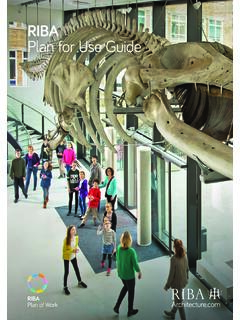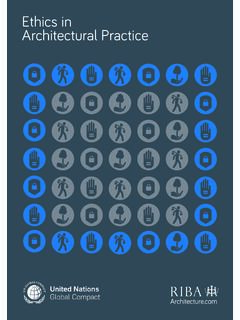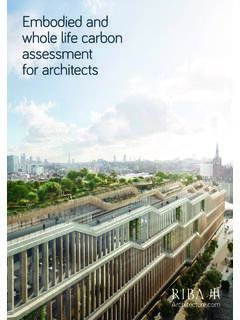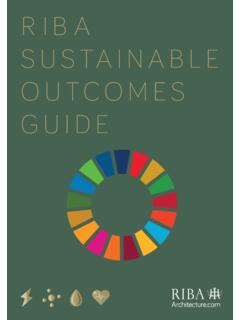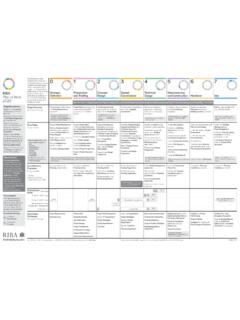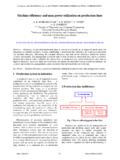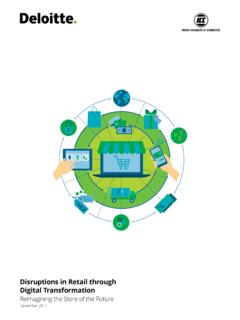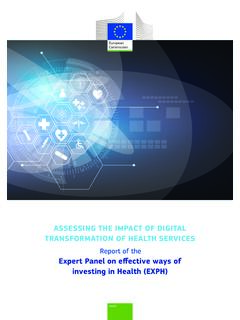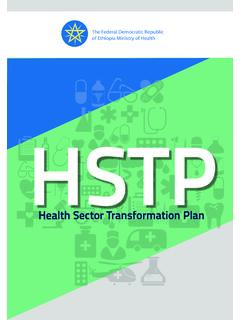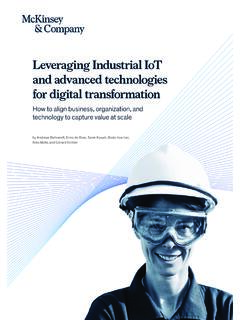Transcription of Digital Transformation in Architecture
1 DigitalTransformationin Architecture2 Microsoft and RIBA | Digital Transformation in ArchitectureCover image The National Automotive Innovation Centre architect and interior design: Cullinan Studio; image Cullinan Word, designed by FaulknerBrowns Architects Hufton+Crow and FaulknerBrowns and RIBA | Digital Transformation in ArchitectureContents01 Foreword 402 Executive summary 603 Digital Transformation in Architecture 1004 Innovation: beyond Building Information Modelling 1605 Increased productivity through new skills and new tools 2206 Collaboration and the client experience 2607 Culture for change 3208 Looking ahead 38401 ForewordRIBA Royal Gold Medallist (2017) Paulo Mendes da Rocha.
2 2018 Microsoft and RIBA | Digital Transformation in ArchitectureThe RIBA, in partnership with Microsoft, is pleased to report these findings from its research into Digital Transformation in RIBA supports the adoption of transformational technology that enables our members to deliver better buildings and places, stronger communities and a sustainable environment. Helping our members to engage with the challenges of a rapidly changing world, such as greater urbanisation and an ageing population, and to embrace Digital opportunities is fundamental to developing and maintaining a strong the history of British Architecture , technology has repeatedly transformed what architects can create, and how they do so.
3 But since the Digital revolution, the profession has experienced a period of rapid change starting with the adoption of 2D, then 3D computer-aided design, moving to Building Information Modelling (BIM) and, in the near future, the Internet of Things (IoT). As this report shows, there has already been some adoption of IoT, and this will grow. Digital Transformation allows us to create what could not be created before, to design new kinds of buildings, to transform towns and cities to meet the challenges of urbanisation and are uniquely placed to meet those challenges.
4 The UK is already a world leader in the digitisation of the design process, and the examples in this report, from UK practices large and small, demonstrate the UK s world-leading techniques and approaches which are bringing real benefits to clients and architects architects, and their innovative design skills, are valued globally. The RIBA is known and respected well beyond these shores. This position of pre-eminence relies on our innovation, the continued Transformation of the work we do and how we do it. The results of this survey are encouraging: they show how open UK architects are to continued change, and to leading that the coming years, we expect to see greater opportunities for Digital collaborative design.
5 Part of this drive for change has come from the UK Government s commitment to a Digital Built Britain which will realise reductions in project costs, timescales, whole life costs and carbon emissions. BIM has realised the benefits of digitisation to the design process. Soon those benefits will move beyond the design and construction stages into soft landings , and to the whole building life cycle. It will not be long before we can expect digitisation to break the confines of the building envelope, transforming the design and operation of whole towns, cities and even countries through integration with the Internet of this journey, we expect to see increasing demonstrable benefits for clients.
6 The client experience has already improved, with the availability of 3D models at the design stages. Using mixed reality to fully engage with holographic representations of proposed buildings and refine design as if in the completed building is already happening, with over a third of respondents now using some form of immersive technology. And more respondents to our survey expect to adopt these technologies within five years we anticipate use of them growing to 64%.The Digital Transformation of the architectural profession is not without risks. In the past, we have seen technological innovation come hand in hand with de-skilling, a rise in wealth inequality, degradation of personal privacy and older generations being left behind.
7 The RIBA has an ongoing role to play in shaping and promoting the use of Digital technology by the architectural profession in ways that are trusted, responsible and inclusive; our use of Digital technology must deliver benefits for the communities that we RIBA will continue to support our members through the journey of Digital Transformation , and we hope that this report forms part of that summaryThe Word, designed by FaulknerBrowns Architects Hufton+Crow and FaulknerBrowns and RIBA | Digital Transformation in Architecture7 This report captures a moment in time in the architectural profession s Digital Transformation journey.
8 It explores what Digital Transformation looks like in Architecture , and what it means for the highlight the technologies being adopted how these are changing the way that projects are run and the internal workings of architectural practices. We look at which technologies are likely to be significant as the industry continues to go through rapid change. We uncover the benefits that this change brings to practices, and also the challenges that need to be overcome. We provide examples of how Digital technologies can improve client outcomes and create better buildings, and we try to give a sense of the potential effects of Digital Transformation on wider society.
9 The RIBA and Microsoft have worked together to conduct the study that underpins this report. We carried out an online survey, and in-depth interviews of over 300 professionals working in architectural practices and other built environment organisations. Participants were architects, as well as other designers and technology specialists, working at a range of levels in their organisations. Organisations of all sizes, working across all sectors and locations of the UK, were represented. Free text responses made by survey respondents are shown throughout the report, as well as quotes from opinion leaders and influential organisations and the report, we also include opinion pieces and case studies from architectural practices, large and small, who have described what they are seeing or doing in terms of Digital Transformation .
10 Their examples cover new build, refurbishment and conservation projects in a range of sectors. These bring to life how adopting new technologies can improve how practices work and what they deliver, as well as highlighting what Digital Transformation could mean for the industry. We are enormously grateful to these practices for their findings from this research show that the way organisations operate has changed significantly in the last few years, and 87% agree that Digital technologies are transforming the way that they work now. Indeed, most architectural practices have embarked on their Digital Transformation journey.


